The 2019 McLaren 720S Spider Is a Zero-Compromise Car
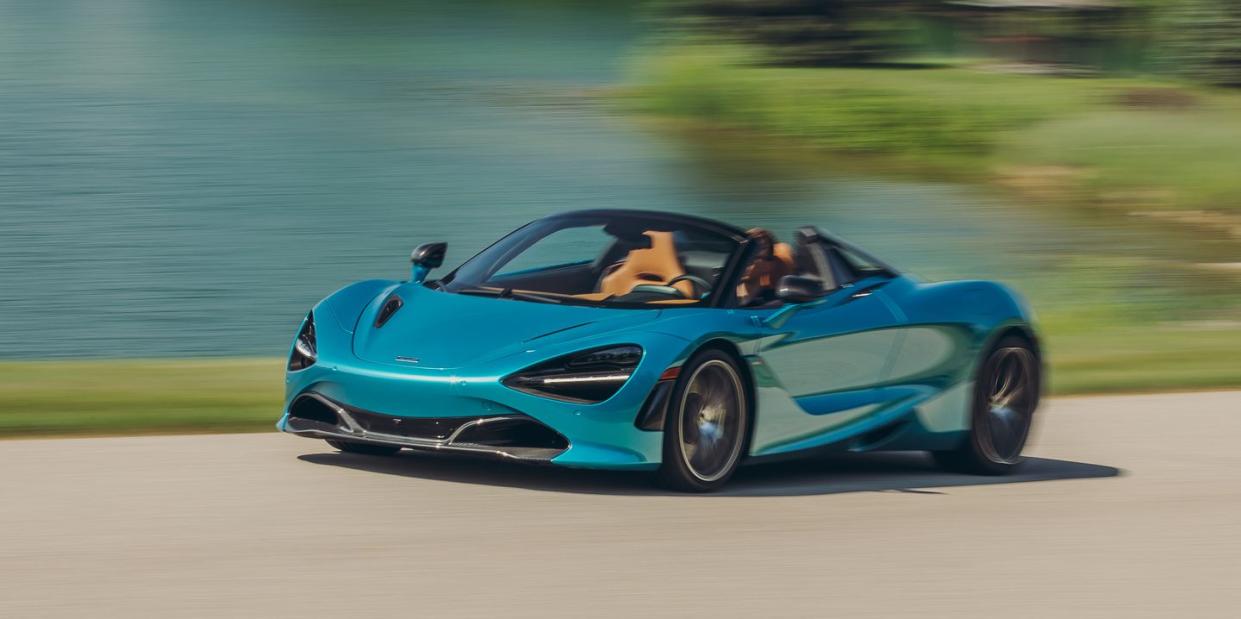
This review has been updated with test results.
Yes, the new-for-'19 McLaren 720S Spider is simply a droptop version of the familiar 720S coupe. Its introduction is in no way significant in the grander scheme of things. But in three very specific ways, the Spider version is meaningful:
1. If you happen to be the person who gets to drive one of these magnificent things.
2. With the removal of the fixed roof, the slinky 720S finally looks exactly like the stupid-expensive Italian loafer it has clearly always wanted to be.
3. There are no real performance trade-offs for going topless.
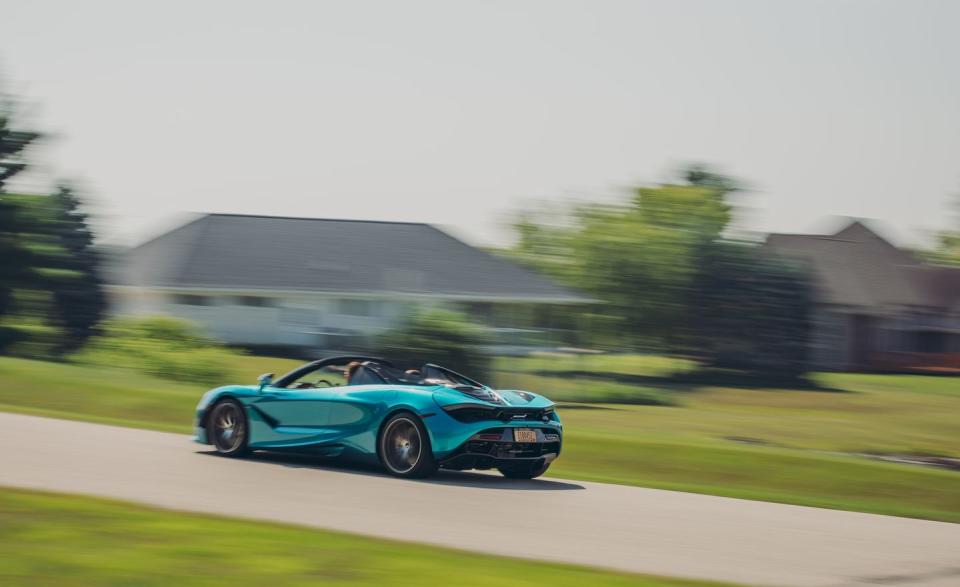
It's been the long-standing conviction of performance-minded car enthusiasts that the convertible version of a sporty vehicle is the poseur's choice. An M3 convertible? That's an abomination! A Porsche 911 Turbo cabriolet? Okay, charlatan! Say hello to Justin Bieber for us.
But, in the rarefied air that the 720S Spider breathes, the loss of the roof has no real impact. This is a vehicle that launched itself to 60 mph in 2.8 seconds and through the quarter mile at 10.3 seconds, only a tenth of a second less insanely quick than its hardtop brother in each measure. The Spider tops out at 212 mph, same as the coupe. Hell, it'll do 202 mph with the top down. With an identical 710-hp twin-turbocharged 4.0-liter V-8 and only 182 additional pounds of heft compared with the coupe version, the performance trade-offs of the Spider are infinitesimally small. McLaren says the Spider is a tenth of a second less insanely quick through the quarter-mile than the coupe. Based on our testing, that means an estimated time of 10.3 seconds. And even then, the differences are academic anyway. How many people do you know who have driven faster than 202 mph? We caught the attention of a cop while driving about 5 mph over the limit on an expressway, just because our mercury silver 720S Spider always looks like it is streaking through the atmosphere at supersonic speed.
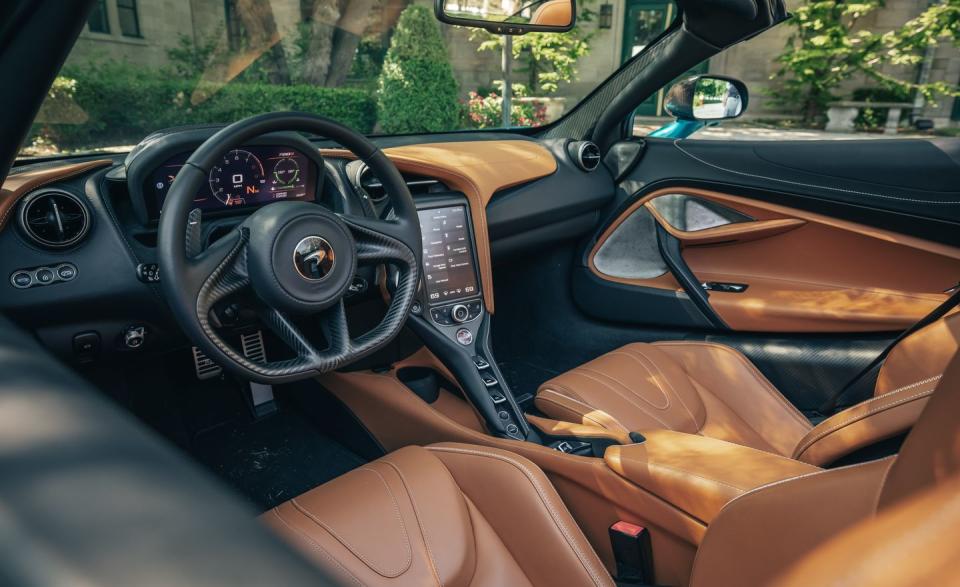
Because the structure of the 720S Spider, as with all modern McLarens, is based around a carbon-fiber tub, no additional material was required to maintain rigidity, even with the top removed. So that additional 108 pounds is just the difference in weight between the power-retractable top and the fixed roof, plus whatever small equipment differences there were between our coupe and Spider test vehicles. Unlike the 570S and 600LT Spiders, the 720S Spider's roof has no transverse seam between the pillars. It is a continuous piece of carbon fiber or variable-opacity electrochromatic glass, making for a smoother appearance and reducing wind noise. If you choose the glass roof, which our test car sported, is eight pounds heavier than the carbon piece, so maybe eat fewer Swedish Fish so as to offset the additional poundage. The glass roof is totally worth it. Regardless of material, the roof also lowers and raises more quickly than those of its lesser brethren. Plenty of time to power it up or down at the traffic light.
No significant changes were required of the suspension system, either. The so-called Proactive Chassis Control II system, which uses a cross-linked set of hydropneumatic units, is as impressive in the new Spider as it was when McLaren launched the first version on the MP4-12C in 2011. Suspension compression on one side of the car limits extension (what normally happens) of the other side, keeping the body level without the use of conventional anti-roll bars. This arrangement allows the company to dial up big roll stiffness without a corresponding rise in spring rate, resulting in a more compliant ride. It's no grand-touring machine, but the 720S is a more comfortable-riding vehicle than any supercar has a right to be.
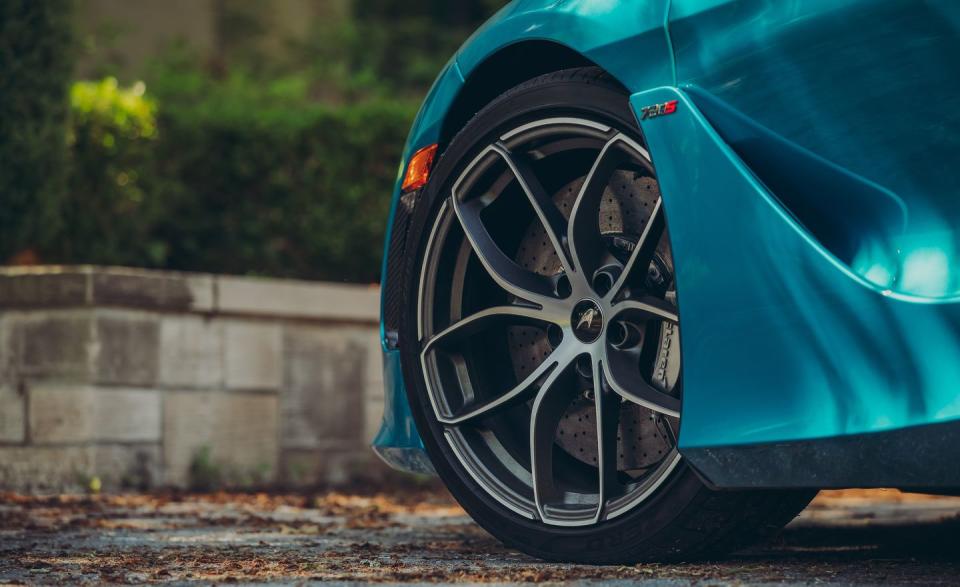
Typical of McLarens, the 720S Spider's electrohydraulic steering system is a thing of beauty. So precise is this instrument that it should be registered with the International Bureau of Weights and Measures as a reference for accurate steering. There is no wasted motion, there are no corrections necessary, and there's just the right amount of feedback through the wheel. It's your hands' window on the world. Have we gone too far? Maybe, but it's really good steering.
The Spider wears the same braking system as the coupe: Six-piston calipers pinch 15.4-inch carbon-ceramic rotors up front, and four-piston calipers squeeze 15.0-inch carbon-ceramic discs out back. These are commanded by a firm brake pedal. Our only complaint about the brakes is that they, much like the lawn service we employ, don't like going to work in the rain. Go for the brake pedal in a downpour and for a fleeting moment, there is almost no response. Then there's all the braking force you could reasonably ask for. The Spider we tested stopped from 70 mph in 141 feet, eight shorter than the coupe. But you need to learn to anticipate that delay in the wet.
The seven-speed dual-clutch automatic transmission operates with ruthless efficiency. Power-on upshifts come like rifle reports, punctuating the unrelenting rush to just-go-ahead-and-arrest-me-now speeds. This car's accelerative thrust above 100 mph is nothing short of staggering.
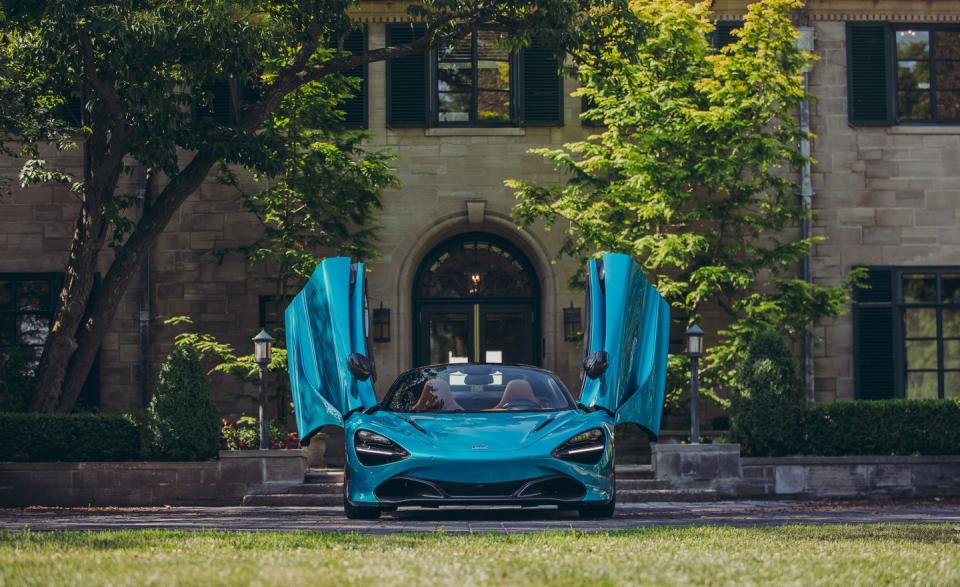
And lest we forget, the 720S Spider is also beautiful. Other McLarens are cool, but the 720S is sexy. It's slinky and curvy. It's lean and toned. Its flanks are sculpture uninterrupted by the big air inlets typically found on mid-engined cars. The interplay of concave and convex surfaces inspires long and repeated appreciation sessions. It even looks good in what McLaren calls Belize Blue, a color we took to calling '90s Ford Escort GT blue. Now that is high praise. One odd but pleasant detail: the Spider's tinted-glass flying buttresses, which look as if they should improve visibility but never really impact it either way. They're cool, though. And of course, the Spider's doors, as with all other recent McLarens, open like butterfly wings.
It's a good thing McLaren already has about a year's worth of 720S coupe sales under its belt, because we have a feeling this Spider, with its nearly nonexistent sacrifices and its full complement of 720S goodness, is going to be the more popular choice soon. And at only $319,100 to start, you really owe it to yourself.
You Might Also Like

